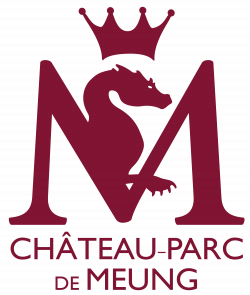Inside the castle

Participation : included in the ticket price
The castle of Meung is one of the largest and most ancient castles of the Loiret.
Until the Revolution, it was the prestigious residence of the bishops of Orleans and welcomed some great names in French history.
Everything begins with the 1st castle which served as the framework for the treaty of 861 between Robert le Fort (“the Strong”) and king Charles le Chauve (the Bald), which marked the start of the ascent of the Capetian dynasty.
The Meung castle was also a strategic location in the conflict which opposed the English against the French during the Hundred Years war: Jeanne d’Arc (Joan of Arc) released it after her victory in Orléans in 1429.
Many kings stopped off there such as François I or Louis XI.
It experienced times of glory, especially on the eve of the Revolution when the bishop of Orleans, Jarente de la Bruyère invested his entire fortune in it to recreate a small Versailles.
The castle also has its dark side: it served as a prison : its most famous prisoner was the poet François Villon.
Bought upon the Revolution by one of the founders of the Banque de France, for several years now the castle of Meung has been a private residence open for tours.
The castle of Meung is a digest of french architecture’s history from the Middle Ages to the classical era.
12th century towers match the ruins of the Manassès castle. This defensive nature of the fortified castle, changed in the 16th century, is smoothed out in the 18th century on the west facade of the castle and thus on the eve of the Revolution, becomes a small Versailles.
Today, this dual-facade castle lets us discover some vital elements of the original architecture :
- a storeroom from the beginning of the 13th century
- a spiral staircase from the 16th century
- parlors and a Versailles parquet-flooring library from the 18th century
- a stunning, luxuriously appointed bathroom
- a turn-of-the 18th century classical chapel by Louis-François Trouard
- music pavilion attributed to Nicolas Le Camus
- etc.
